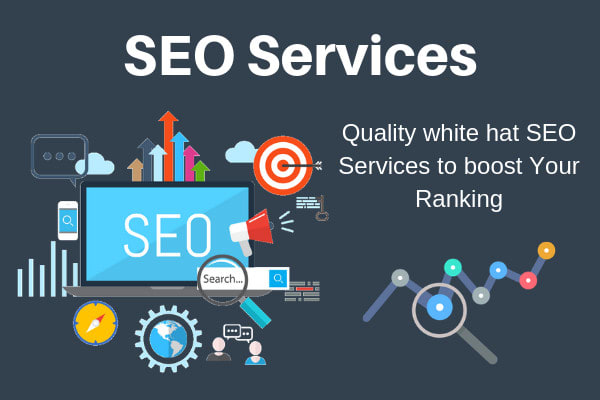Running a Shopify store is an excellent way to tap into the booming world of e-commerce. However, with the growing competition, just setting up a store isn’t enough. To stand out, you need a powerful marketing strategy that drives organic traffic to your store. This is where the significance of Shopify SEO becomes clear. With the right techniques, you can optimize your Shopify store to rank higher on search engines, attract more visitors, and convert them into loyal customers. Let’s explore some cutting-edge SEO strategies that can help boost your Shopify sales.
1. Start with Keyword Research
An effective Shopify SEO strategy starts with thorough keyword research. Identify terms and phrases your potential customers use when searching for products. Utilize resources such as Google Keyword Planner, Ahrefs, or SEMrush to discover keywords within your niche that have high search volumes but low competition. After pinpointing the appropriate keywords, integrate them into your:
- Product titles
- Meta descriptions
- URLs
- Blog content
- Image alt text
For example, if you offer handmade leather wallets, using keywords such as “handmade leather wallets” or “purchase leather wallets online” can attract specific visitors to your store.
2. Optimize Your Product Pages
The product pages are the core of your Shopify store. To maximize visibility and conversions, optimize these pages with Shopify SEO best practices:
- Write compelling product descriptions: Use engaging, keyword-rich descriptions that highlight the benefits and unique features of your products.
- Add high-quality images: Use clear, professional images and optimize their file names and alt text with relevant keywords.
- Use SEO-friendly URLs: Keep URLs short and descriptive, avoiding unnecessary words or numbers. For example, instead of “store.com/p123”, use “www.store.com/leather-wallets”.
- Enable customer reviews: Positive reviews improve your credibility and add fresh, user-generated content to your pages, which is great for SEO.
3. Create Engaging and Informative Blog Content
Blogging is an underrated but powerful tool for driving organic traffic to your Shopify store. By creating high-quality, informative blog posts, you can establish yourself as an authority in your niche while targeting long-tail keywords. For example:
- Write “How-to” guides related to your products.
- Share industry news and trends.
- Offer tips and tricks that provide value to your audience.
Each blog post should be optimized for Shopify SEO with relevant keywords, internal links to your product pages, and a clear call-to-action (CTA) directing readers to your store.

4. Enhance Site Speed and Mobile Responsiveness
Site speed and mobile friendliness are critical ranking factors for search engines. A slow-loading or non-responsive site can drive potential customers away. To improve your Shopify store’s performance:
- Use a fast-loading theme: Shopify provides a range of responsive and lightweight themes.
- Compress images: Consider using tools such as TinyPNG to minimize image file sizes while maintaining quality.
- Minimize apps and plugins: Take advantage of tools like Google Keyword Planner, Ahrefs, or SEMrush to uncover keywords in your niche that attract a lot of search traffic but face minimal competition.
- Enable AMP: Accelerated Mobile Pages (AMP) can improve your mobile site’s loading time.
By optimizing these aspects, you’ll enhance both user experience and your Shopify SEO rankings.
5. Leverage Internal and External Linking
Link building is another vital aspect of Shopify SEO. Internal and external links improve your site’s authority and help search engines understand your content better.
- Internal links: Connect your product pages, blogs, and other content using internal links. For example, a blog about “How to Choose the Perfect Wallet” could link to your wallet product page.
- External links: Partner with reputable blogs or websites to gain backlinks. High-quality backlinks indicate to search engines that your website is credible and reliable.
6. Optimize for Local SEO (If Applicable)
If your Shopify store caters to a local audience, optimizing for local SEO can give you an edge. Include location-specific keywords in your product pages and blog posts. Additionally:
- List your store on Google My Business.
- Encourage local customers to leave reviews.
- Incorporate your business’s name, address, and phone number (NAP) into your website.
This strategy can make your Shopify store more visible to nearby customers searching for your products.
7. Use Schema Markup
Schema markup, also known as structured data, enhances the ability of search engines to comprehend your content more effectively. By adding schema to your Shopify store, you can enhance how your products appear on search engine results pages (SERPs). For example:
- Display product ratings and reviews.
- Highlight prices and availability.
- Show product categories.
Utilizing schema markup enhances your Shopify SEO and can greatly increase your click-through rates.
8. Monitor Analytics and Refine Strategies
SEO is an ongoing process rather than a one-off task; it necessitates regular oversight and adjustments. Utilize tools such as Google Analytics and the analytics features available in Shopify to monitor:
- Organic traffic
- Bounce rates
- Conversion rates
- Keyword rankings
Examine the data to determine what is effective and refine your strategies as needed. Consistently refresh your content and explore new keywords to maintain an advantage over your competitors.
9. Invest in Professional SEO Services
If you’re new to SEO or find it challenging to implement these strategies, consider partnering with an expert. Professional SEO services can provide tailored solutions for your Shopify store, ensuring long-term success. An experienced agency will handle everything from keyword research to technical SEO, saving you time and effort.
Mastering Shopify SEO is essential for driving organic traffic, improving visibility, and increasing sales. By implementing these cutting-edge strategies, you can position your Shopify store for long-term success. From keyword research and product page optimization to site speed and local SEO, every step plays a crucial role in your store’s performance. Don’t forget to track your progress and adapt your strategies as needed to stay ahead of the competition. With the right approach, your Shopify sales can truly skyrocket!

